Restart Jenkins From Web Gui
Jenkins is a popular open-source automation server that is widely used for continuous integration and delivery of software development projects. Like any other software, Jenkins may encounter certain issues or require a restart for various reasons. In this article, we will explore how to restart Jenkins from the Web GUI. We will also cover other related topics such as stopping Jenkins, checking Jenkins status, and verifying the restart process. Additionally, we will address frequently asked questions related to restarting Jenkins.
Stopping Jenkins
Before we can restart Jenkins, it is important to stop the server first. This ensures that any ongoing activities are completed or paused before performing the restart. To stop Jenkins, follow these steps:
1. Open your web browser and navigate to the Jenkins server’s URL.
2. Login to the Jenkins instance using your credentials.
3. On the Jenkins dashboard, click on the “Manage Jenkins” link on the left-hand side.
4. Under the “Manage Jenkins” section, click on the “Prepare for Shutdown” link.
5. You will be redirected to a page that prompts you to wait for pending builds to complete.
6. Once all the builds are completed, you can proceed to restart Jenkins.
Checking Jenkins Status
To ensure that you can safely restart Jenkins, it is essential to check its status. This will help you identify any ongoing processes or issues that might interfere with the restart. To check Jenkins status, follow these steps:
1. Login to the Jenkins instance using your credentials.
2. On the Jenkins dashboard, take note of the status indicator located at the top right corner.
3. If the status indicator is green, it means that Jenkins is running normally.
4. If the status indicator is yellow or red, it indicates that Jenkins is experiencing some issues.
5. Before restarting Jenkins, it is recommended to address any issues identified during the status check.
Accessing Jenkins from the Web GUI
To restart Jenkins from the Web GUI, you need to have administrative access to the Jenkins instance. Follow these steps to access Jenkins from the Web GUI:
1. Open your web browser and navigate to the Jenkins server’s URL.
2. Login to the Jenkins instance using your administrative credentials.
3. You will be redirected to the Jenkins dashboard, which serves as the main control panel for the server.
Navigating to Jenkins System Configure
To restart Jenkins, you need to access the System Configuration page. This page allows you to make various configuration changes to Jenkins, including the restart option. Follow these steps to navigate to the System Configuration page:
1. On the Jenkins dashboard, click on the “Manage Jenkins” link on the left-hand side.
2. Under the “Manage Jenkins” section, click on the “Configure System” link.
3. You will be redirected to the System Configuration page, which displays a list of various Jenkins settings.
Restarting Jenkins from Web GUI
Now that you have accessed the System Configuration page, you can initiate the restart process. Follow these steps to restart Jenkins from the Web GUI:
1. Scroll down the System Configuration page until you find the “Restart Jenkins When No Jobs Are Running” option.
2. Tick the checkbox next to this option to enable the restart functionality.
3. Click on the “Save” button at the bottom of the page to save the changes and initiate the restart process.
4. Jenkins will now stop all ongoing activities, terminate the server, and automatically restart.
Confirming Jenkins Restart
After initiating the restart process, Jenkins will automatically shut down and display a confirmation page. This page confirms the restart and provides details about the restart sequence. Follow these steps to confirm Jenkins restart:
1. Once the server restarts, you will see a “Jenkins is Restarting” page.
2. Wait for the restart process to complete, which usually takes a few moments.
3. Once the restart is successful, Jenkins will redirect you to the login page.
4. You can then log in again with your credentials.
Verifying Jenkins Restart
After logging in again, you should verify that Jenkins has restarted successfully. Follow these steps to verify the restart:
1. On the Jenkins dashboard, check the status indicator at the top right corner.
2. If the status indicator is green, it means Jenkins has restarted successfully.
3. If the indicator is yellow or red, it indicates that the restart process encountered issues.
4. If you encounter any issues, refer to the FAQs section for further troubleshooting steps.
FAQs
Q1: Can I restart Jenkins from the command line (cmd)?
A1: Yes, Jenkins can also be restarted from the command line. On Windows, open the command prompt and navigate to the Jenkins installation directory. Run the command `jenkins.exe restart` to initiate the restart process.
Q2: What is a safe restart in Jenkins?
A2: Safe restart in Jenkins ensures that ongoing builds are completed before restarting the server. During a safe restart, Jenkins prepares to shut down, blocks new builds, waits for ongoing builds to finish, and then restarts.
Q3: Why can’t Jenkins restart itself as currently configured?
A3: Jenkins cannot restart itself if there are jobs that are running or builds in progress. It requires all builds to be completed or paused manually before initiating a restart.
Q4: How can I check Jenkins logs?
A4: Jenkins logs can be accessed through the Jenkins UI. On the Jenkins dashboard, click on the “Manage Jenkins” link, then select “System Log” from the menu on the left-hand side. The System Log page displays the latest logs.
Q5: I encountered the error “Failed to start Jenkins Continuous Integration Server CentOS 7.” What can I do?
A5: This error can occur due to various reasons such as incorrect Java installation or corrupted Jenkins configuration files. Start by checking the Jenkins log for more specific error details. Additionally, verify that the Java installation is correct and try restarting Jenkins again.
Q6: What should I do if Jenkins continuous integration server fails to start?
A6: If Jenkins fails to start, check the server logs for any error messages. Make sure the Java installation is properly configured and no conflicting processes are running on the server. If the issue persists, refer to the official Jenkins documentation or seek assistance from the Jenkins community.
Q7: How can I use the Jenkins-plugin-clirestart to restart Jenkins from the Web GUI?
A7: The Jenkins-plugin-clirestart is a plugin that allows administrators to restart Jenkins through the Web GUI. To use this plugin, install it through the Jenkins Plugin Manager. Once installed, you can find the restart option under the “Manage Jenkins” section and proceed with the steps mentioned earlier to restart Jenkins.
In conclusion, restarting Jenkins from the Web GUI is a straightforward process that ensures a smooth transition without interrupting ongoing activities. By following the steps mentioned in this article, you can safely restart Jenkins, check its status, and verify the restart. Additionally, we discussed commonly asked questions regarding Jenkins restart and provided relevant answers.
How To Restart Jenkins
How Can I Restart Jenkins?
Jenkins is an open-source automation server that is widely used for building, testing, and deploying software. As with any software, there may be occasions where you need to restart Jenkins, either to apply configuration changes or to resolve issues. Restarting Jenkins is a simple process; however, it is essential to follow the correct steps to ensure a smooth restart without any data loss or downtime. In this article, we will delve into the various methods to restart Jenkins and address some frequently asked questions.
Methods to Restart Jenkins:
1. Restarting Through the Jenkins UI:
One of the easiest ways to restart Jenkins is through the user interface. Follow these steps:
a. Open your web browser and navigate to the Jenkins UI by typing “localhost:8080” or the appropriate URL in the address bar.
b. Enter your credentials to log in to Jenkins.
c. Once logged in, you will see a “Manage Jenkins” option on the left-hand side. Click on it.
d. In the “Manage Jenkins” page, scroll down and click on “Reload Configuration from Disk.” This will reload Jenkins’ configuration.
e. Next, click on “Safe Restart.” Jenkins will safely shut down and restart, applying any configuration changes or updates.
2. Restarting Using Command Line:
Another method to restart Jenkins is through the command line interface. Here’s how:
a. Open the terminal or command prompt on your machine.
b. Depending on the operating system, navigate to the Jenkins installation directory. For example, on Linux, it may be “/etc/init.d/jenkins” or “/etc/init.d/jenkins restart.”
c. Execute the appropriate command to restart Jenkins. The command may vary based on the operating system, so refer to your system’s documentation or guides for the correct syntax.
On Linux, you might use the command `sudo service jenkins restart` or `sudo systemctl restart jenkins`.
On Windows, use the command `net stop jenkins` followed by `net start jenkins`.
3. Restarting Using Jenkins CLI:
If you prefer using the command-line interface over the UI, Jenkins provides a CLI tool to interact with your Jenkins server remotely. The CLI allows you to perform various operations, including restarting Jenkins. Follow these steps:
a. Open the terminal or command prompt on your machine.
b. Navigate to the Jenkins installation directory.
c. Execute the following command to restart Jenkins: `java -jar jenkins-cli.jar -s http://localhost:8080 safe-restart`. Modify the URL if your Jenkins instance is running on a different port.
Note: Ensure you have the `jenkins-cli.jar` file in the Jenkins installation directory. You can download it from the Jenkins website if it’s not already present.
FAQs:
Q: Will restarting Jenkins cause any data loss?
A: No, restarting Jenkins does not result in any data loss. Jenkins stores its configuration and job data on disk, and restarting only reloads the configuration without affecting the stored data.
Q: Can I schedule automatic restarts for Jenkins?
A: Yes, you can schedule automatic restarts for Jenkins using plugins like the “SafeRestart Plugin.” This plugin adds a “Quiet Down” option in the “Manage Jenkins” page, allowing you to schedule periodic automatic restarts.
Q: What are the instances where I might need to restart Jenkins?
A: Some scenarios where restarting Jenkins may be necessary include applying configuration changes, installing or updating plugins, resolving memory leaks or crashes, and troubleshooting issues with builds or jobs.
Q: How can I check if Jenkins has restarted successfully?
A: After initiating a restart, you can monitor the console output or logs to confirm whether the restart was successful. Additionally, try accessing Jenkins through the UI or running `http://localhost:8080` to see if it’s operational.
Q: Are there any precautions to take before restarting Jenkins?
A: It is recommended to save any unsaved work or configurations before restarting Jenkins. Additionally, notify team members of the scheduled restart to prevent any disruptions during the process.
In conclusion, restarting Jenkins is a necessary and straightforward task that can be done through the UI, command line, or CLI. Regardless of the method chosen, ensure that you follow the correct steps to avoid any data loss or downtime. By understanding the various approaches to restart Jenkins, users can effectively manage their Jenkins instances and troubleshoot any possible issues that may arise.
How To Restart Jenkins From Command Prompt?
Jenkins is an open-source automation server that is widely used for continuous integration and delivery of software projects. It provides a platform for building, testing, and deploying applications, making it an essential tool for developers. In order to ensure smooth operation and avoid any issues, it is sometimes necessary to restart Jenkins. This article will guide you through the process of restarting Jenkins from the command prompt, providing step-by-step instructions and addressing common questions.
Step 1: Access the command prompt
To begin, you need to gain access to the command prompt on your system. This can be done by opening the Command Prompt application on Windows, or by using the Terminal on macOS or Linux.
Step 2: Navigate to the Jenkins installation directory
Once you have the command prompt open, navigate to the directory where Jenkins is installed on your system. Typically, the default installation directory for Jenkins is C:\Program Files\Jenkins on Windows and /var/lib/jenkins on Linux. Use the “cd” command to change directories and move to the appropriate location.
Step 3: Stop the Jenkins service
The next step is to stop the Jenkins service. To do this, run the following command on Windows:
“`
java -jar jenkins.war –httpPort=8080 stop
“`
On Linux or macOS, use this command instead:
“`
sudo service jenkins stop
“`
Step 4: Start the Jenkins service again
After stopping the Jenkins service, you can now start it again. On Windows, use the following command:
“`
java -jar jenkins.war
“`
On Linux or macOS, run this command:
“`
sudo service jenkins start
“`
Step 5: Verify Jenkins is running
To ensure that Jenkins has been successfully restarted, open a web browser and go to http://localhost:8080 (replace “localhost” with the appropriate hostname or IP address if necessary). If Jenkins is running correctly, you should see the Jenkins web interface.
FAQs:
Q1: What does restarting Jenkins do?
A1: Restarting Jenkins essentially refreshes its state and allows it to start afresh. It can be useful in situations where there are issues with Jenkins, such as when plugins are not functioning correctly or when changes to the configuration need to take effect.
Q2: Can I restart Jenkins without using the command prompt?
A2: Yes, there are alternative methods to restart Jenkins, such as using the Jenkins web interface or restarting the Jenkins service from the operating system’s service management tool. However, restarting from the command prompt provides a quick and efficient way to ensure a clean restart.
Q3: How can I restart Jenkins when I don’t have administrative privileges?
A3: If you do not have administrative privileges on your system, you may not be able to stop or start the Jenkins service directly. In such cases, it is recommended to contact an administrator or follow the alternative methods mentioned earlier.
Q4: Will restarting Jenkins cause any data loss?
A4: Restarting Jenkins should not cause any data loss. Jenkins stores its configuration and job data in separate directories, which are not affected by a restart. However, it is always a good practice to ensure you have a backup of critical data before performing any major operations.
Q5: Can I automate the Jenkins restart process?
A5: Yes, you can automate the restart process using scripts or external tools. This can be particularly useful in scenarios where regular restarts are required or as part of a more extensive automated deployment process.
In conclusion, restarting Jenkins from the command prompt is a straightforward process that can be accomplished by following a few simple steps. Whether you need to address issues with plugins, apply configuration changes, or ensure a clean restart, restarting Jenkins can help maintain its smooth operation. By understanding the steps involved and the potential implications, you can confidently restart Jenkins whenever necessary.
Keywords searched by users: restart jenkins from web gui restart jenkins from cmd, Jenkins safe restart, Restart Jenkins, jenkins cannot restart itself as currently configured., How to check jenkins log, Failed to start jenkins Continuous Integration Server CentOS 7, failed to start jenkins continuous integration server., Jenkins-plugin-cli
Categories: Top 100 Restart Jenkins From Web Gui
See more here: nhanvietluanvan.com
Restart Jenkins From Cmd
Jenkins is a popular open-source automation server that allows developers to build, test, and deploy their software. It provides a web-based interface but can also be controlled from the command line. Sometimes, you might encounter issues with Jenkins, and restarting it is often the first troubleshooting step. In this article, we will walk you through the process of restarting Jenkins from the command line and address some frequently asked questions at the end.
Step 1: Access Command Prompt or Terminal
To restart Jenkins from the command line, you need to access either the Command Prompt (for Windows users) or the Terminal (for macOS and Linux users). You can search for “Command Prompt” in the Start menu on Windows or utilize the search feature in macOS and Linux to find the Terminal.
Step 2: Stop Jenkins
Once you have the command line interface open, the first step is to stop the Jenkins service. To do this, you need to execute a specific command depending on your operating system:
– For Windows: Type the command `net stop “Jenkins”`. This will stop the Jenkins service on your machine.
– For macOS and Linux: Enter the command `sudo systemctl stop jenkins`. This command will stop the Jenkins service by using the systemctl utility.
Step 3: Confirm Jenkins is Stopped
After executing the stop command, you should ensure that Jenkins has successfully stopped. You can use the following command to verify:
– For Windows: Type `sc query “Jenkins”` and check the service status. If it says “STOPPED,” Jenkins is stopped.
– For macOS and Linux: Enter `sudo systemctl status jenkins` and look for the “Active” status. If it says “inactive (dead),” Jenkins has stopped.
Step 4: Restart Jenkins
Now that Jenkins is stopped, you can proceed to restart it. Execute the relevant command on your command line interface:
– For Windows: Type `net start “Jenkins”` to initiate the Jenkins service.
– For macOS and Linux: Enter `sudo systemctl start jenkins` to start the Jenkins service.
Step 5: Check Jenkins Status
After executing the start command, you should verify if Jenkins has successfully restarted. You can use the following command to check:
– For Windows: Enter `sc query “Jenkins”` and look for the service status. If it says “RUNNING,” Jenkins has fully restarted.
– For macOS and Linux: Type `sudo systemctl status jenkins` and examine the “Active” status. If it says “active (running),” Jenkins has restarted successfully.
FAQs:
Q1: Can restarting Jenkins solve all issues?
Restarting Jenkins can resolve certain issues caused by temporary glitches or memory leaks. However, not all problems can be fixed by simply restarting Jenkins. It is recommended to review the Jenkins logs and consult documentation or online communities for specific troubleshooting steps.
Q2: What are the alternative methods to restart Jenkins?
Apart from the command line approach, Jenkins can also be restarted through the web-based interface. After logging in, you can navigate to the “Manage Jenkins” section and choose “Restart Jenkins” from the menu. Additionally, you can restart the entire machine where Jenkins is hosted, which can refresh not only Jenkins but also other potentially affected services.
Q3: Can I restart Jenkins remotely?
Yes, Jenkins can be restarted remotely if you have administrative access to the machine where it is hosted. You can connect to the machine using remote desktop tools or SSH, open the command line interface, and follow the steps mentioned earlier to restart Jenkins.
Q4: Are there any precautions to take before restarting Jenkins?
Restarting Jenkins stops ongoing builds or jobs, so it’s essential to communicate with your team members regarding the planned restart to avoid any unintended consequences. Additionally, make sure you have saved any unsaved configurations or changes in Jenkins before restarting, as they might be lost during the restart process.
Q5: How frequently should Jenkins be restarted?
The frequency of restarting Jenkins depends on the specific circumstances. If you notice performance degradation or unexpected behavior, restarting Jenkins can be a good troubleshooting step. However, routinely restarting Jenkins without justification is not recommended, as it may interrupt ongoing builds and disrupt your development process.
In conclusion, restarting Jenkins from the command line is a straightforward process that can help resolve certain issues with the automation server. By following the step-by-step guide provided in this article, you can ensure a smooth restart of Jenkins whenever necessary. However, it is important to note that restarting Jenkins might not solve all problems, and further investigation may be required for complex issues.
Jenkins Safe Restart
Introduction
Jenkins, an open-source automation tool, has become one of the most popular choices for continuous integration (CI) and continuous delivery (CD). Its ability to automate various tasks, such as building, deploying, and testing software, has made it a widely adopted tool by software development teams worldwide. However, even with its robust features, there are times when Jenkins needs to be restarted. To ensure the stability and reliability of the CI/CD pipeline during restarts, Jenkins provides a feature called “Safe Restart.” This article will delve into the concept of Jenkins Safe Restart, its importance, and how it helps maintain CI/CD reliability.
Understanding Jenkins Safe Restart
Safe Restart is a built-in feature in Jenkins that enables administrators to safely shutdown and restart the Jenkins server. It ensures that ongoing builds and queued jobs are completed before the restart process begins. By utilizing this feature, Jenkins minimizes the risk of job failures or interrupted builds during system updates or configuration changes, providing a more seamless CI/CD experience.
Benefits of Jenkins Safe Restart
1. Seamless Job Continuity: Jenkins Safe Restart ensures that ongoing jobs and queued items are finished before the restart process initiates. This allows for a smooth transition without the risk of job failures, job loss, or corrupted build artifacts.
2. Graceful Shutdown: Safe Restart allows Jenkins to gracefully shut down all running processes. It ensures that all the open connections, such as network sockets or file system locks, are cleanly released, preventing data corruption or potential system instabilities. This graceful shutdown reduces the chances of data loss and minimizes disruption to active builds.
3. Configuration Persistence: Jenkins often relies on various plugins and configurations that are stored in memory. Safe Restart makes sure that these configurations are persisted before restarting the server. This ensures that all crucial settings, including connections to external systems or authentication parameters, are preserved, saving time and effort in reconfiguring the system after the restart.
4. User Notification: Safe Restart offers a mechanism to notify users about the upcoming restart. Depending on the configuration, users can receive email notifications, see a countdown timer on the Jenkins UI, or receive a warning message when interacting with the Jenkins web interface. This notification feature allows users to plan accordingly and finish any critical tasks before the restart.
Executing Jenkins Safe Restart
To perform a Safe Restart in Jenkins, administrators can follow these steps:
1. Navigate to the Jenkins home page.
2. Click on the “Manage Jenkins” option.
3. Under the “Manage Jenkins” page, locate and click on the “Safe Restart” option.
4. Confirm the restart by clicking on the “Restart” button in the confirmation dialog box.
5. Jenkins initiates the Safe Restart process and ensures ongoing jobs are completed.
Frequently Asked Questions
Q1. Does Safe Restart impact Jenkins availability?
A1. During the Safe Restart process, Jenkins is temporarily unavailable until the server restarts. However, ongoing jobs and queued items will continue to run in the background until completion.
Q2. Can Safe Restart be scheduled?
A2. Yes, Jenkins provides a plugin called “Quiet Down” that helps schedule Safe Restart by putting Jenkins into a quiet mode. It stops new builds from starting and allows ongoing jobs to complete before the restart.
Q3. Will Safe Restart cause any data loss?
A3. Safe Restart is designed to ensure the safety and integrity of your Jenkins system. It gracefully shuts down ongoing processes and ensures the persistence of critical configurations, minimizing the risk of data loss.
Q4. How can users be notified about the Safe Restart?
A4. Jenkins provides various notification mechanisms, including email notifications, countdown timers on the web interface, and warning messages when interacting with the system. Administrators can configure these notifications to inform users about the upcoming restart.
Q5. Can Safe Restart be automated?
A5. Yes, Jenkins supports the use of scripting and APIs, allowing automated triggering of Safe Restart through external tools. This enables system administrators to schedule regular restarts or integrate Safe Restart into their deployment pipelines.
Conclusion
Jenkins Safe Restart plays a vital role in maintaining the stability and reliability of CI/CD pipelines during system restarts. Its ability to ensure continuity of ongoing jobs, graceful shutdown of processes, and persistence of configurations makes it an essential feature for Jenkins administrators. By utilizing Safe Restart, organizations can minimize the risk of job failures, data loss, and system instabilities, providing an improved user experience and maintaining the high standards of continuous integration reliability.
Images related to the topic restart jenkins from web gui
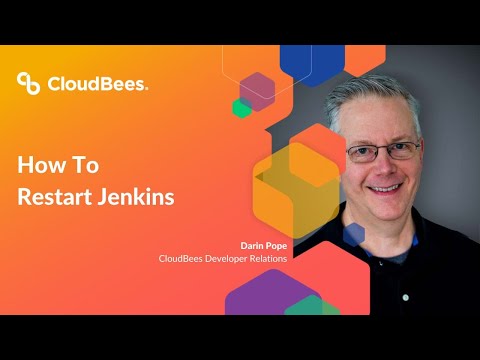
Found 27 images related to restart jenkins from web gui theme
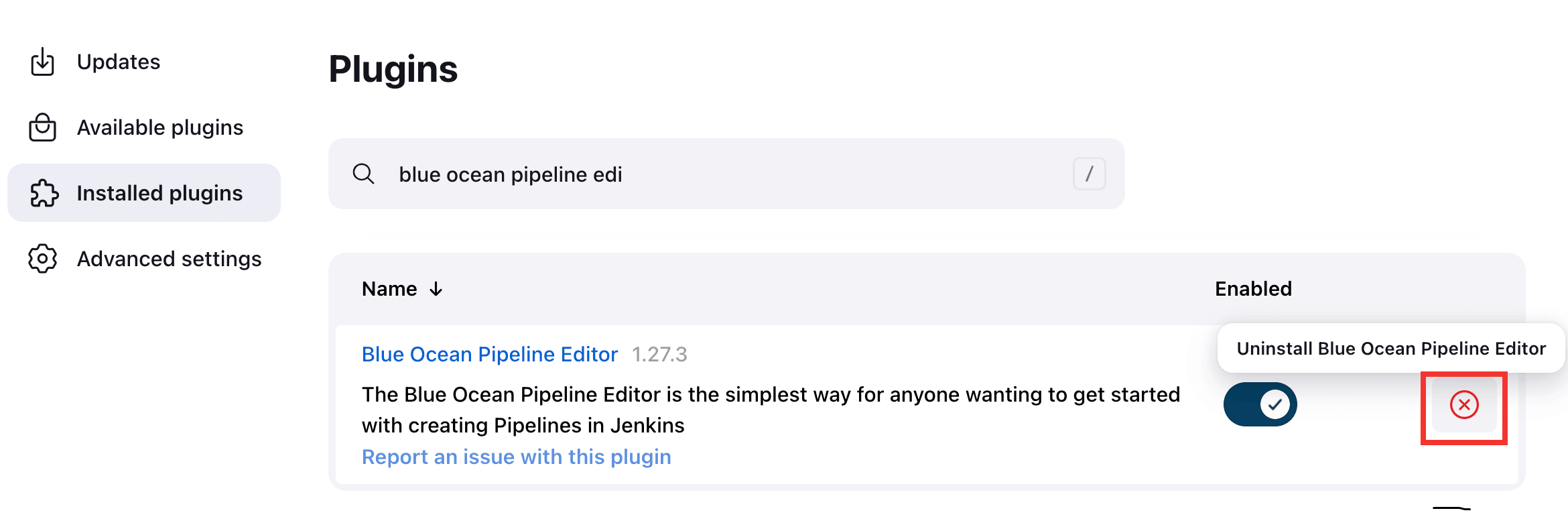





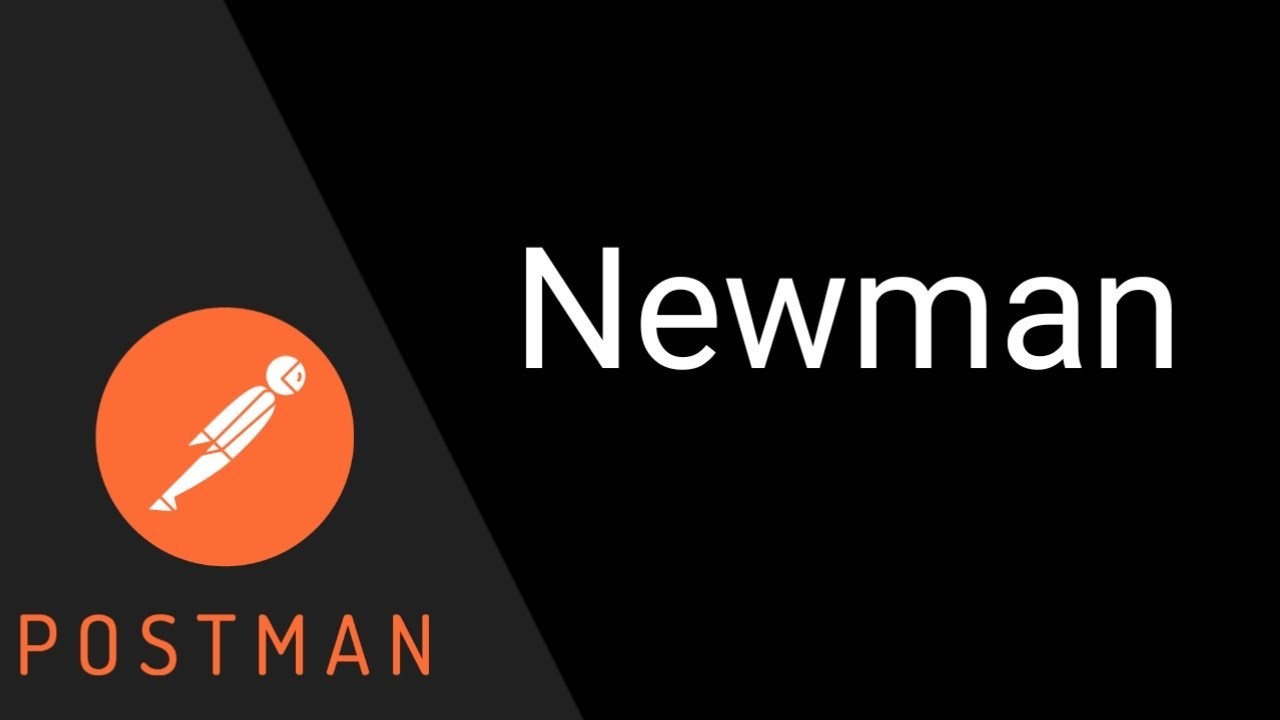
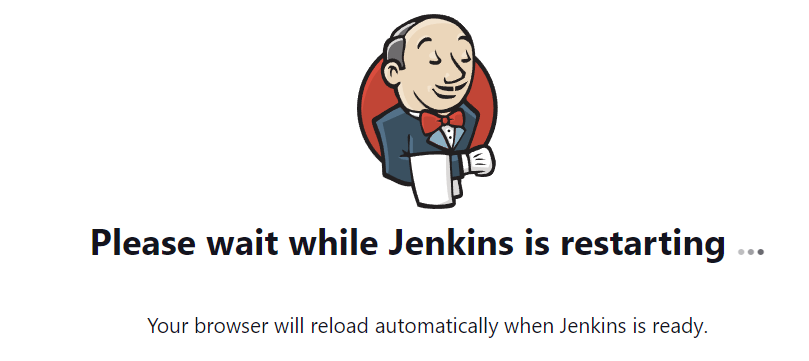

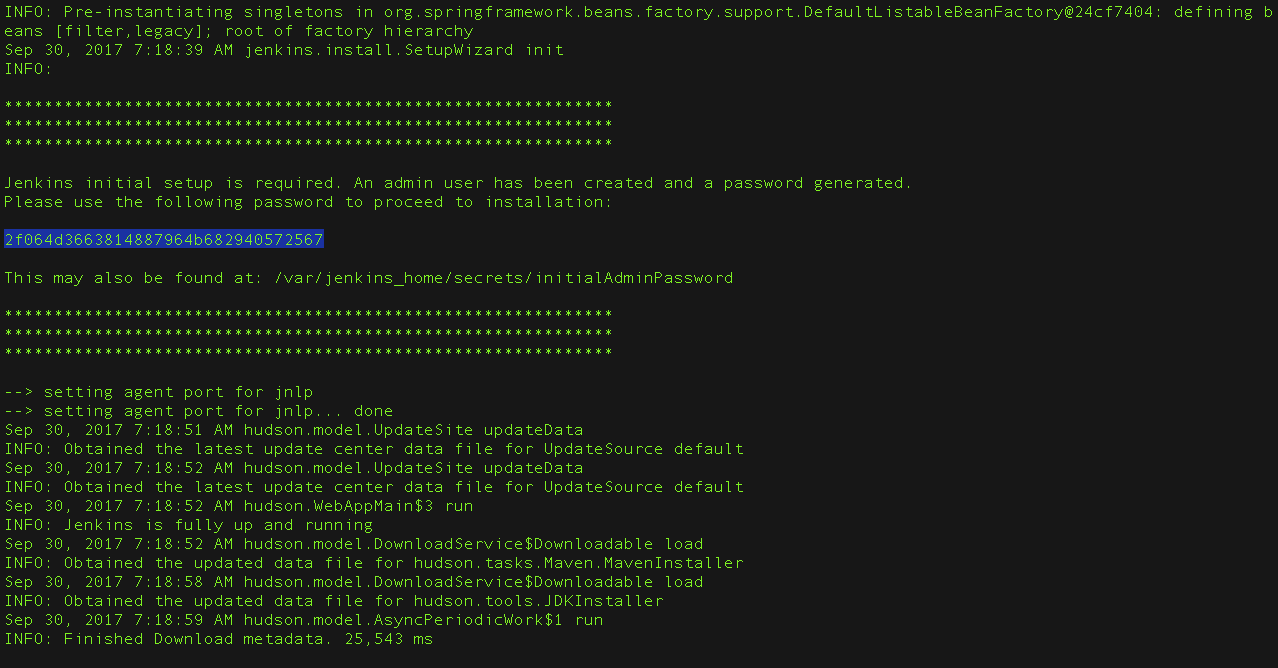












Article link: restart jenkins from web gui.
Learn more about the topic restart jenkins from web gui.
- How to restart Jenkins manually | Edureka Community
- Restart Jenkins from Web Interface – Samuel Haddad
- How to restart Jenkins manually? – Stack Overflow
- How to Restart Jenkins Manually {4 Methods} – phoenixNAP
- How to Start, Stop or Restart your Instance?
- How to restart Jenkins manually? – Stack Overflow
- How to shutdown my Jenkins safely? – Stack Overflow
- Jenkins: Restart /Shutdown – 2020 – BogoToBogo
- Methods to Restart Jenkins – KnowledgeHut
- How to restart Jenkins manually? – LinkedIn
- JENKINS – some ways to restart manually Jenkins services
- How to Start, Stop or Restart your Instance?
See more: https://nhanvietluanvan.com/luat-hoc